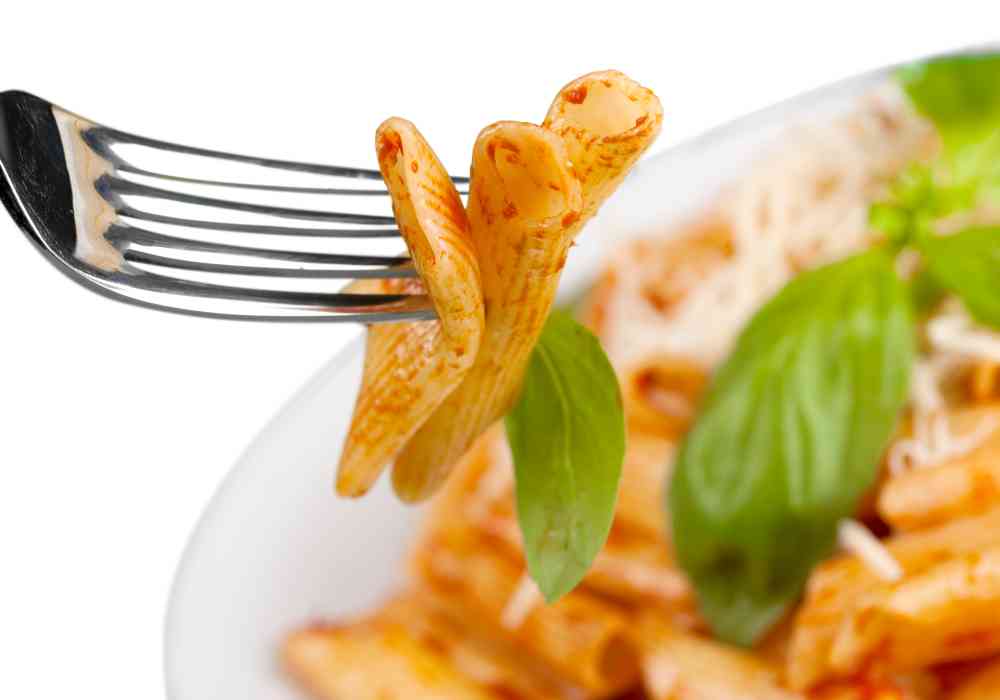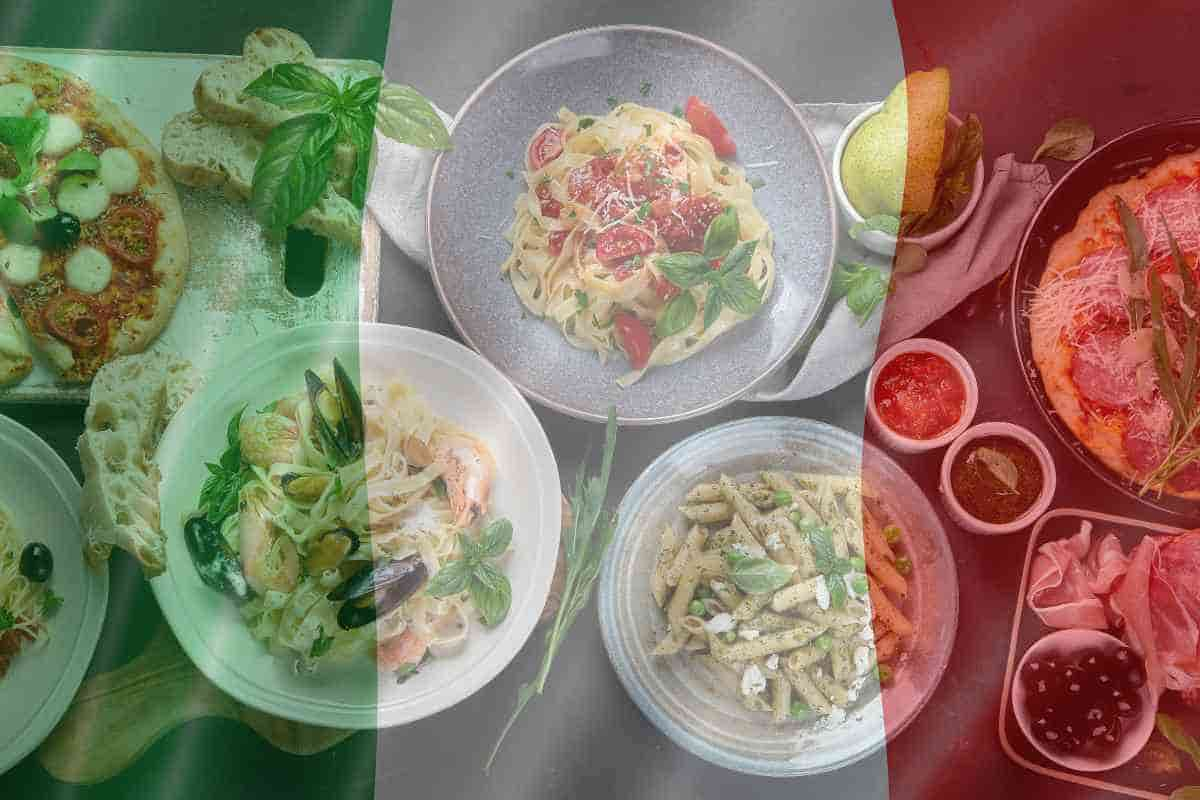Italian dining etiquette (galateo in Italian) emphasizes enjoying food and social interaction. It is customary to wait for everyone to be served before starting a meal, to use utensils properly, and to pass food to the left.
Table of Contents
1. Courses Are Served Individually
In Italian restaurants, courses are ordered one at a time rather than all at once. Ordering a course at a time allows you to enjoy each dish in succession and savor the flavors and textures without feeling rushed.
2. Napkins On The Lap
It is proper dining etiquette to place the napkin on your lap as soon as you sit down. Place your napkin loosely on your chair if you must leave the table during your meal.
After eating your meal, place your napkin neatly to the left of your plate. This signals the server that you have finished your meal and are ready for the check.
Learn more: 8 Napkin Etiquette Rules & Tips
3. No Elbows On The Table
In Italy, putting your elbows on the dinner table while dining is disrespectful to the host and shows a lack of proper etiquette.
Only rest your wrists on the table, with your arms at your side. In some cases, such as at a casual meal with close friends or family, putting your elbows on the table may be more acceptable.
4. Water Or Wine Over Soft Drinks And Soda
In Italian cuisine, water and wine are traditional beverage choices and are often more suitable accompaniments to meals than soft drinks or soda.
Italians view water as a refreshing and neutral choice that complements the flavors of the food without overpowering them. It is also a healthy choice; Italians often drink water with meals to aid digestion. Sparkling water is a popular choice.
Wine is also a popular choice in Italian cuisine, and it is often paired with specific dishes to enhance the flavors of the food.
Also read: 14 Wine Etiquette Do’s and Don’ts
5. Wait Until Everyone’s Food Arrives
Food is an important part of Italian culture, and meals are social occasions for friends and family. Waiting until everyone’s food arrives before you start eating is polite.
It shows respect for your dining companions and allows everyone to begin eating together, enhancing the overall dining experience. Wait for the host to say ‘buon appetito’ before you begin to eat.
6. Pass Food To Your Left

Shared dishes are essential components of a complete Italian meal. Supper must include bread with seasoned olive oil and appetizers (aperitivo), often shared dishes. Passing the shared dishes to your left is customary so everyone can help themselves.
7. Don’t Stake Your Plate
Staking your plate in a restaurant is rude and impolite. Serve yourself only as much as you can eat and leave the rest for others.
When you stake your plate, you signal the staff that you did not enjoy your meal. In Italian food culture, leaving a clean plate is a sign of appreciation for the food and a compliment to the chef.
8. Cheese Etiquette
Italians only use cheese in some dishes. If the food is served without cheese, don’t ask for it. Seafood, salads, and pizzas are not served with cheese in Italy.
Italy is the birthplace of Parmigiano Reggiano. It is the most common selection when cheese is part of the meal. Grating fresh Parmesan over the dish is traditional when eating pasta or risotto.
9. Don’t Switch Fork And Knife In Hands
It’s improper dining etiquette to switch your fork and knife while dining. Hold the fork in your left hand and the knife in your right hand throughout the meal. Hold the fork with the tines of the fork facing downward.
10. Use Fork For Pasta

Eat your pasta using a fork, not a spoon. Start by placing a small amount of pasta on your fork, then twist the fork to gather the strands together. Don’t cut or slurp pasta into your mouth.
11. Don’t Bite Your Bread
Biting your bread while dining is impolite and inappropriate. Instead, tear off small pieces and enjoy them with the meal. This shows respect for the cuisine and the dining experience as a whole.
12. Don’t Rush The Meals
There are several reasons why you should not rush your meals:
- The Italian dining experience is all about taking your time and savoring the flavors of each course.
- Many restaurants offer multiple courses, such as antipasto, pasta, meat dishes, and desserts.
- In Italy, dining is a social activity, and it is common for meals to last several hours.
13. No Smoking At The Table
It is rude to smoke while dining in restaurants. If you must smoke, you should excuse yourself from the dining table and go to the smoking zone.
14. Sign With Silverware When You’re Finished
To indicate that you have finished eating, place your silverware parallel to each other diagonally across the right side of your plate. Ensure the tips point to ten o’clock and the handles rest at four o’clock.
This signals to the server that you are finished, and they can clear your plate.
15. Ask For The Check
Your server may walk by your table periodically, even in a busy restaurant. Lifting your index finger or waving your hand casually is the simplest way to signal the server that you are ready for a check. But never snap your fingers.
16. European Tipping Tips
Tipping in Europe is less common than it is in the United States. However, if you receive excellent service from your server or bartender, it’s always nice to leave some small change as a tip (usually about 10-15%).
What Is The Proper Way To Eat Pizza In Italy?
Eat pizza with a fork and a knife. A fork and knife work well for a thicker, heavily topped pizza. However, eating pizza with your hands is also acceptable, especially if it is a thinner, Neapolitan-style pizza.
What Are The 7 Most Common Italian Food Words?
Italy is famous for its delicious and diverse cuisine. Here are seven of the most common food words you might encounter in Italy:
- Pasta – A staple food in Italy, often served as a first course. There are many different types of pasta, including spaghetti, penne, and lasagna.
- Pizza – Another iconic Italian dish. Pizza is a flatbread with tomato sauce, cheese, and various toppings.
- Gelato – Italian ice cream made with milk, sugar, and various flavorings. It is known for its creamy texture and intense flavors.
- Espresso – A small, strong coffee served in Italy and is the basis for many coffee drinks, including cappuccino and latte.
- Tiramisu – A popular Italian dessert made with layers of sponge cake, coffee, and mascarpone cheese.
- Parmigiano–Reggiano – This is a type of hard cheese produced in Italy’s Parma region. It is often grated over pasta dishes or served as an appetizer.
- Prosciutto – This is a type of dry-cured ham that is thinly sliced and often served as an appetizer or in sandwiches.
What Meal Courses Are Available In Italian Restaurants?
Here are some of the most common meal courses that you might find in restaurants:
- Antipasto: These are appetizers or starters served before the main course. Examples include bruschetta, prosciutto e melone (prosciutto and melon), caprese salad, and crostini.
- Primi Piatti: These are the first courses or pasta dishes served after the antipasti. Examples include spaghetti carbonara, lasagna, ravioli, gnocchi, and risotto.
- Secondi Piatti: These are the main courses, which usually consist of meat or fish dishes. Examples include grilled steak, roasted chicken, osso buco, seafood dishes like calamari, and veal dishes.
- Contorni: These side dishes are served with the main course. Examples include roasted vegetables, sautéed mushrooms, or a salad.
- Dolci: These are desserts, and some Italian restaurants might offer a variety of cakes, tarts, and other sweets. Some of the most popular Italian desserts include tiramisu, panna cotta, cannoli, and gelato.
- Digestivi: These are after-dinner drinks meant to aid digestion, such as grappa, amaro, and limoncello.

